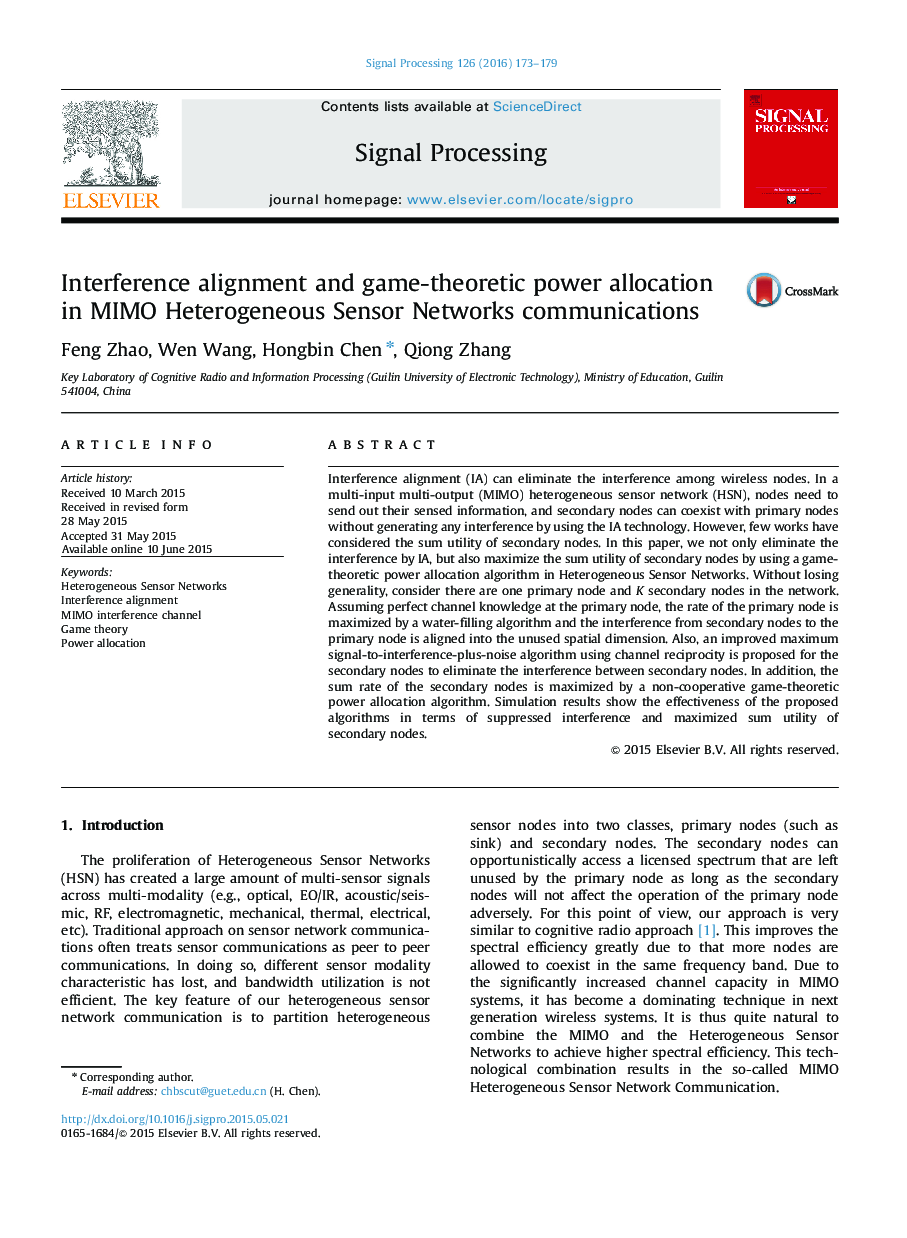| Article ID | Journal | Published Year | Pages | File Type |
|---|---|---|---|---|
| 562195 | Signal Processing | 2016 | 7 Pages |
•We not only eliminate the interference, but also maximize the utility.•The interference is aligned into the unused spatial dimension.•An algorithm is proposed to eliminate the interference.•The sum rate is maximized by game-theoretic power allocation.
Interference alignment (IA) can eliminate the interference among wireless nodes. In a multi-input multi-output (MIMO) heterogeneous sensor network (HSN), nodes need to send out their sensed information, and secondary nodes can coexist with primary nodes without generating any interference by using the IA technology. However, few works have considered the sum utility of secondary nodes. In this paper, we not only eliminate the interference by IA, but also maximize the sum utility of secondary nodes by using a game-theoretic power allocation algorithm in Heterogeneous Sensor Networks. Without losing generality, consider there are one primary node and K secondary nodes in the network. Assuming perfect channel knowledge at the primary node, the rate of the primary node is maximized by a water-filling algorithm and the interference from secondary nodes to the primary node is aligned into the unused spatial dimension. Also, an improved maximum signal-to-interference-plus-noise algorithm using channel reciprocity is proposed for the secondary nodes to eliminate the interference between secondary nodes. In addition, the sum rate of the secondary nodes is maximized by a non-cooperative game-theoretic power allocation algorithm. Simulation results show the effectiveness of the proposed algorithms in terms of suppressed interference and maximized sum utility of secondary nodes.
